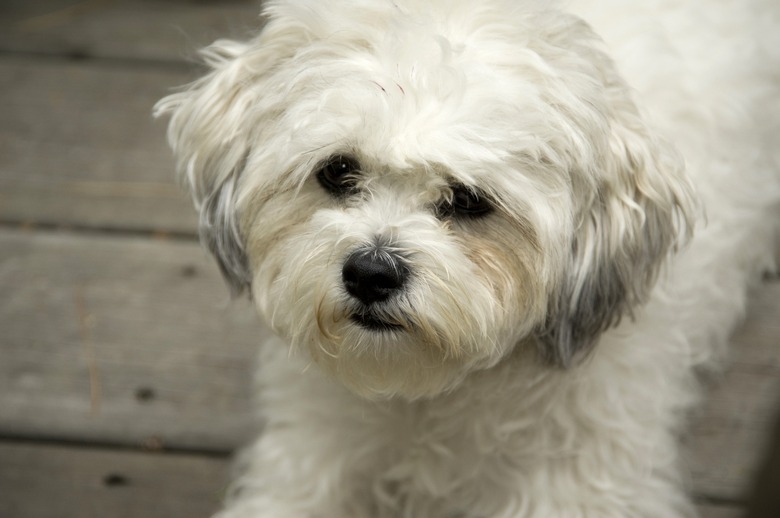Why Is My Dog's White Hair Turning Brown?
It's natural for your dog's white fur to undergo some discoloration. It's not always possible for dogs to keep themselves perfectly clean, and things that would easily blend in on a brown-hair dog really stand out on a dog with white fur. A dog's white fur turning brown is not uncommon or serious.
According to Four Paws, pet wipes are your friend in this battle. Use pet wipes to gently wipe the eye area and wipe around the mouth to remove food stains. It's easier to prevent stains than to try to get rid of them once they start. A brown-hair dog or any dog with darker fur can benefit from these cleaning regimens too.
Dogs' white fur turning brown
Dogs' white fur turning brown
According to the American Maltese Association, any breed of white-furred dog can exhibit staining on the face from tears. Genetics that cause a dog to create excess tears can lead to more tear staining than another dog, even one from the same litter. The tear staining is due to a molecule in the tears called porphyrins.
Porphyrins contain iron and are produced when the body breaks down red blood cells. Molecules containing porphyrins are excreted through tears, saliva, and the pads of the feet. It is the iron in the molecules that causes the dark red or brown staining. These stains can get even darker if they are exposed to sunlight.
It can help to trim the hair at the corner of the eyes. This keeps tears from dripping down the face. Because saliva also contains porphyrins, a dog who chews on his leg or tail may also have his white fur turn brown or red.
Red yeast on dog fur
Red yeast on dog fur
Besides porphyrins, red yeast (Pityrosporum) can also contribute to tear staining. If there are excessive tears, this moistness can encourage the growth of this type of yeast. If the cause of your dog's white hair turning brown is yeast, you will notice an odor coming from the eye area.
According to VCA Hospitals, yeast dermatitis is extremely common. The most common signs of a yeast infection on the skin of your dog are itching and redness, an odor, darkly pigmented skin, and flaky skin. This is the same type of yeast that can also cause ear infections.
For yeast that is recurrent or seems to be from a dog who always has a wet face, you can switch from a water bowl to a water bottle to keep the face drier. Yet another consideration is giving your dog distilled water to drink, as the iron in regular water can contribute to fur staining.
Keep fur white
Keep fur white
When you brush your dog, sprinkle a little corn starch on her. Corn starch absorbs oils, covers up many stains, and removes odors. There are also some commercially available dog-whitening shampoos. For serious stains, combine baking soda and water into a paste and then brush it into the stain. Let it dry and then wipe it off with a damp cloth.
If the staining is from urine, try wiping your pet with a wipe right after urinating to keep the area clean. Apply full-strength shampoo on the spot, letting it sit for a few minutes before rinsing it.
The bichon frise is a dog with fluffy white fur. According to the Bichon Frise Club of America, keeping the face clean is the first line of defense against a dog's white fur turning brown. Frequent washing with a mild shampoo can help, and you can use some commercially available cream products that go under the eyes to allow tears to roll down without soaking in. Vaseline also works for this.
